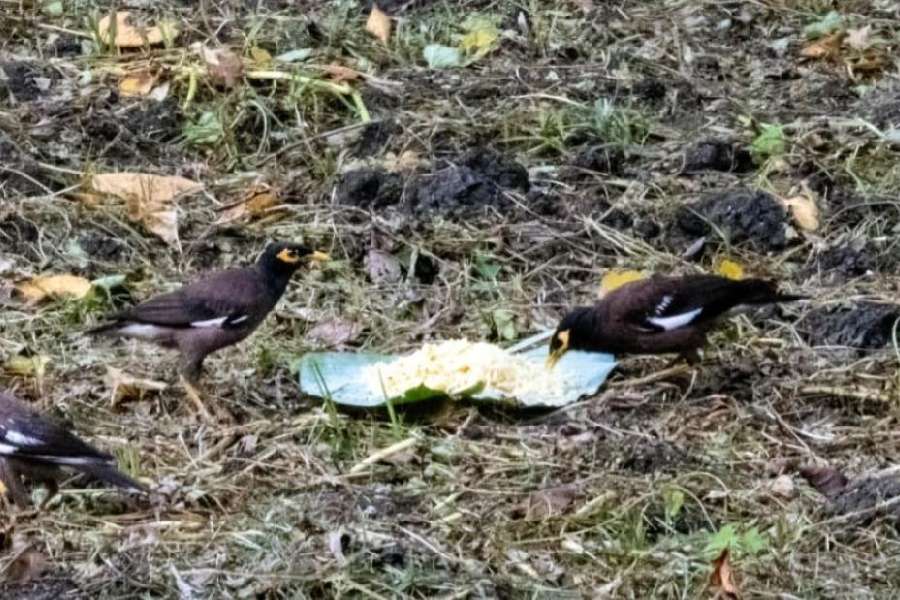A field experiment, initiated under weariness and worry during the work-from-home months of the Covid-19 pandemic, has identified five mammals and 12 birds as the main scavengers of human-generated food waste in southern Bengal’s urban landscapes.
The study by scientists at the Indian Institute of Science Education and Research (IISER), Calcutta, has also revealed that dogs and common mynas are keystone species among urban scavengers, far more important, for instance, than house crows, house sparrows, cats, or cows.
Their findings suggest that several species of birds and mammals — some like the jungle mynah, spotted dove, or palm squirrel, never previously documented as scavengers — have adapted to living off food cooked by humans. At one point during the study, the scientists spotted a cow munching on rice and chicken curry gravy.
Their study marks the first attempt in the country to document and understand the roles of scavenger species across human-dominated landscapes, an exercise that scientists say will be crucial in future efforts to nurture biodiversity in urban areas.
“We know that dogs thrive in human-dominated areas with access to food left-overs, but our findings point to their important role in this ecosystem,” said Anindita Bhadra, associate professor and an animal behavioural ecologist at the IISER, Calcutta, who supervised the study.
“But alongside dogs, the common mynas are the next most important scavengers and that was unexpected. We were also surprised to see the spotted dove and the greater coucal among the scavengers,” said Bhadra, who has studied canine behaviour in the past. “We didn’t really expect to see these birds to eat rice and curry,” she said.
It was in mid-2020 when India was under the pandemic lockdown that Bhadra wondered whether it would be possible to use time at home to continue animal observations. One of her PhD students, Sourabh Biswas, was in his second year and worried he was losing time at home.
Bhadra asked Biswas and a few other students — all at home at different towns in Bengal — to place rice and gravy, whether vegetarian or non-vegetarian, just outside their homes and video record the food over the next hour, repeating the process for 10 days.
Over the next several months, the researchers recorded 498 feeding sessions from 15 sites in eight towns — Kalyani, Bakkhali, Bangaon, Behala, Durgapur, Gaighata, Narega, and Shyamnagar.
They found that house crows, house sparrows, common mynas and dogs consumed both vegetarian and non-vegetarian food, while cows consumed only vegetarian food — except one cow. And white-breasted water hen and domestic ducks consumed only non-vegetarian food.
The other team members are Tathagatha Bhowmick, Kalyan Ghosh, Anamitra Roy, Aesha Lahiri, and Sampita Sarkar, all at the IISER.











